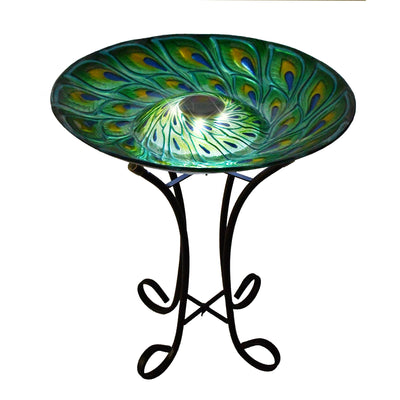Top Garden Decor Mistakes and How to Avoid Them
Creating an inviting and harmonious garden requires thoughtful planning and attention to detail. However, certain common mistakes can detract from the beauty and functionality of your outdoor space. By being aware of these pitfalls and implementing strategic solutions, you can design a garden that is both aesthetically pleasing and practical. And since we love water features for their calming effect and visual appeal, incorporating them thoughtfully can elevate your outdoor environment. 
Avoiding Clutter in Garden Design
Overcrowding your garden with excessive furniture, decorations, or plants can lead to a chaotic and uninviting atmosphere. An abundance of mismatched items not only diminishes visual appeal but can also impede movement and maintenance. To prevent this, adopt a minimalist approach by selecting a few high-quality, cohesive pieces that complement your garden's overall theme. This strategy enhances the sense of space and allows each element to stand out, contributing to a more organized and serene environment.
Ensuring Proper Lighting
Inadequate or excessive lighting can significantly impact the ambiance and usability of your garden. Poor lighting may obscure pathways and features, posing safety hazards, while overly bright lights can create a harsh and unwelcoming environment. To achieve balanced illumination, consider layering different types of lighting:
- Ambient Lighting: Provides overall illumination for general visibility.
- Task Lighting: Focuses on specific areas such as pathways or seating zones to enhance safety and functionality.
-
Accent Lighting: Highlights focal points like sculptures, water features, or distinctive plants, adding depth and interest.
Opt for warm white lights to create a cozy and inviting atmosphere. Additionally, ensure that all outdoor lighting fixtures are weather-resistant and suitable for exterior use to maintain longevity and performance.
Achieving Balanced Layouts
A well-balanced garden layout is crucial for creating a harmonious and visually appealing space. Disproportionate elements, such as oversized furniture in a small garden or uneven plant distribution, can disrupt the overall flow and aesthetic. To establish balance
-
Scale and Proportion: Choose furniture and decorative items that are appropriately sized for your garden. For instance, in a compact space, select smaller seating options to avoid overcrowding.
-
Symmetry and Asymmetry: Decide between a symmetrical layout, which offers a formal appearance, or an asymmetrical arrangement for a more relaxed and natural feel.
-
Focal Points: Incorporate focal points like a central sculpture or a distinctive plant to draw attention and provide structure.
By thoughtfully arranging elements and considering the visual weight of each component, you can create a cohesive and inviting garden space. In the middle of your planning, remember that a pet friendly garden with accessible paths and safe, non-toxic plants ensures peace of mind for pet owners.
Selecting Weather-Appropriate Materials
Choosing materials that are not suited to your local climate can lead to rapid deterioration and increased maintenance costs. For example, certain woods may warp or rot in humid conditions, while metals can rust if not properly treated. To ensure durability:
-
Research Material Properties: Understand how different materials respond to your region's weather conditions.
-
Opt for Weather-Resistant Options: Select materials known for their resilience, such as teak or cedar for wood, and powder-coated metals for outdoor furniture.
-
Regular Maintenance: Implement a maintenance routine to protect and prolong the life of garden features, including sealing wood surfaces and applying rust-resistant coatings to metal items.
Investing in high-quality, weather-appropriate materials not only enhances the longevity of your garden elements but also maintains the aesthetic appeal of your outdoor space.
Additional Considerations
Beyond the primary factors discussed, consider the following to further enhance your garden's design:
Consistency with Home Architecture: Ensure that your garden's style complements the architectural design of your home for a seamless transition between indoor and outdoor spaces.

Product in picture: Sleek Black Bistro Bliss Collection- Elegant Cast Aluminium Patio Set
-
Seasonal Interest: Incorporate plants that offer visual appeal throughout different seasons to maintain year-round interest.
- Sustainable Practices: Implement eco-friendly solutions such as rainwater harvesting, composting, and using native plants to promote environmental sustainability.
By addressing these aspects, you can create a garden that is not only beautiful but also functional and sustainable.




















Leave a comment